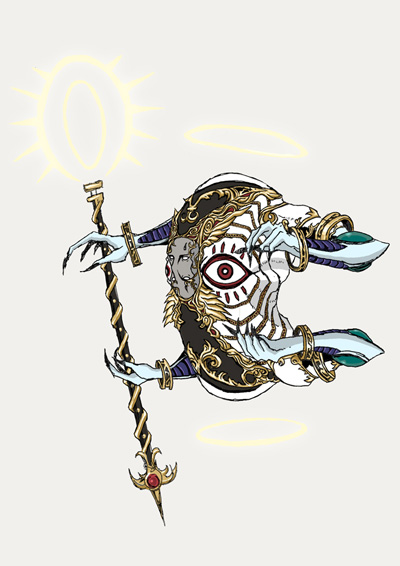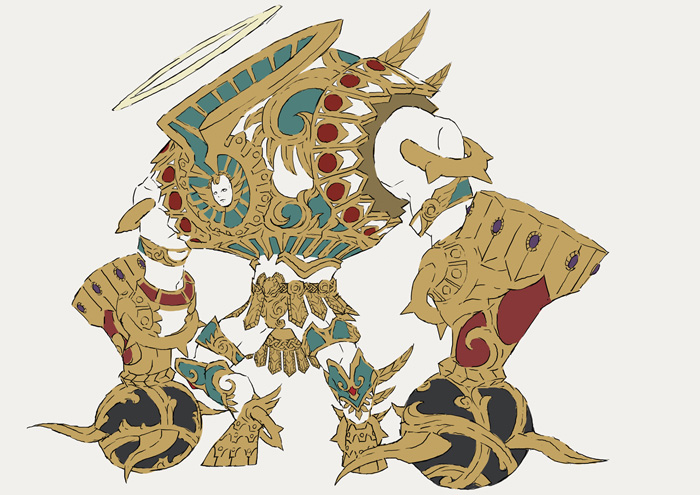In Bayonetta 2, the gameplay is significantly influenced by the duality of its enemy types, angels and demons, each bringing their unique characteristics that shape the combat experience. This distinction not only adds to the visual and thematic palette of the game but also influences the combat mechanics and strategies players must employ.
Angels
Angels in Bayonetta 2 represent the forces of Paradiso (Heaven) and are intricately designed to reflect a hierarchy, incorporating various forms and abilities that challenge players in different ways. The following are key angel types encountered throughout the game:
– Affinity: As the lowest tier in the angelic hierarchy (Third Sphere), Affinities have a distinctly pure appearance, characterized by their Pure White Wings and an arsenal of religious weaponry. Variants like Affinity C have unique traits, displaying enhanced speed and power despite the absence of wings.
– Beloved: Positioned in the Second Sphere, Beloved serve as combat experts tasked with vanquishing enemies of Heaven. Their spiritual prowess makes them formidable opponents, often exhibiting specialized attack patterns.
– Braves: Known for their physical strength, Braves can function solo or combine to create a Cherubim (First Sphere), showcasing their ability to work in unison to amplify their combat effectiveness.
– Lustitia: Serving as one of the game’s primary bosses, Lustitia embodies a terrifying and grotesque form that intensifies the horror elements within the game. Its massive size and design create a memorable confrontation that underscores the unsettling aesthetic of angels.
– Fidelity: With a bizarre jellyfish-like appearance, Fidelity introduces a sense of otherworldliness through its unique tentacle mechanics, adding a layer of challenge through unpredictable movements.
– Fearless/Fairness: These angels further diversify encounters with their erratic behavior and non-human traits, such as having additional faces that complicate combat dynamics.
Angels in the game serve as both adversaries and reflections of the thematic conflict, utilizing holy weaponry and spiritual abilities that challenge players to adapt their strategies continuously.
Demons
In contrast, demons represent the chaotic forces of Inferno (Hell) and lack the structured hierarchy seen in angels. Their designs emphasize brutality and a more raw essence of aggression. Notable demon types include:
– Hideous: These beast-like creatures are manifestations of “hatred given form,” roving Hell’s landscape in search of foes. Their primal instincts add a layer of unpredictability to combat.
– Fury: With the ability to hinder Bayonetta’s movement using magical energy, Fury introduces a strategic element with its attack mechanics, demanding players remain vigilant and responsive to its patterns.
– Pain: While comparable in strength to the Beloved angels, Pain’s grotesque transformations and non-humanoid figure differentiate it dramatically, providing unique gameplay challenges that require adaptability.
– Sloth and Insidious: Although not as elaborately detailed, these demons still represent the terrifying and powerful aspects of the infernal beings, reinforcing the menacing atmosphere of the game.
Demons add an aggressive dynamic to encounters, emphasizing raw power and chaos over the structured conflict represented by angels. Their design frequently veers towards the non-organic, enhancing the unsettling nature of their characters.
Summary Table
| Category | Example Types | Description |
|———-|————————————-|————————————————————————————————|
| Angels | Affinity, Beloved, Braves, Lustitia | Hierarchical beings ranging from kingly to grotesque, equipped with holy weapons and spiritual prowess. |
| Demons | Hideous, Fury, Pain | Chaotic forces designed to embody brutality and aggression, characterized by unique attack strategies and forms. |
Conclusion
The enemy design in Bayonetta 2 significantly enriches the player’s experience, presenting a compelling struggle between the angelic and demonic forces. Each type of enemy contributes to a diverse range of challenges and play styles, ensuring that battles remain dynamic and engaging throughout the game. This duality not only enhances the gameplay but also reinforces the overarching narrative of the celestial conflict that defines the Bayonetta universe.






Leave a Reply